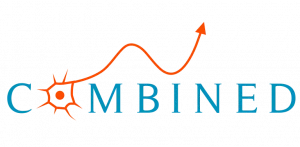CTNNB1 Connect and Cure has partnered with teams of leaders in the field to better understand CTNNB1 Syndrome and to find treatments. We have established patient registries, natural history studies, and biorepositories. Data is collected in multiple ways, including surveys, clinical assessments, and review of past medical records. Your participation is essential for developing better care guidelines and progressing the development of treatments, including the ability to run clinical trials. This table provides information about current research opportunities.
We encourage all CTNNB1 patients to participate in the following studies:

Patient Registry & Medical Records Database
Sign up online to join our CTNNB1 patient registry
Option to add your medical institutions to provide de-identified records for research

Natural History Database
- Online surveys
- Clinical phone interview
- Optional blood sample collection

Natural History Study
in collaboration with


- In-person motor and cognitive assessments
- In-person research EEGs
To join, please email research@curectnnb1.org

Biorepository
- Biosample collection
To join, please email research@curectnnb1.org

Speech Study
- In-person speech/language, fine motor and/or cognition assessments
- Caregiver questionnaire(s)
To join, please email mwmitchel@geisinger.edu.

STRIPES Study
- Online surveys

EEG Bank
- Upload existing EEG records
To join, please email research@curectnnb1.org

Disease Concept Model
- One 60-90 minute online interview
To join, please email sophia.marek@rutgers.edu.

Cerebrospinal Fluid Collection
- Send samples that would otherwise be discarded to the CTNNB1 biorepository
If your child is scheduled to have a tethered spinal cord release surgery, please email research@curectnnb1.org
What is a Patient Registry?
A patient registry is an organized system for collecting, storing, and disseminating information about people who have a disease. Some patient registries can be used for natural history studies and are often used to recruit patients for clinical trials.
What is a Natural History Study?
A natural history study looks at how a disease changes over time in a patient population.
What is a Biorepository?
A biorepository is a collection of biosamples, which are important tools for researchers to advance CTNNB1 research. There are several opportunities for those diagnosed with CTNNB1 Syndrome, siblings, and biological parents to give blood samples throughout the year. We can also store bio waste from surgical procedures. Please email research@curectnnb1.org to learn more.
